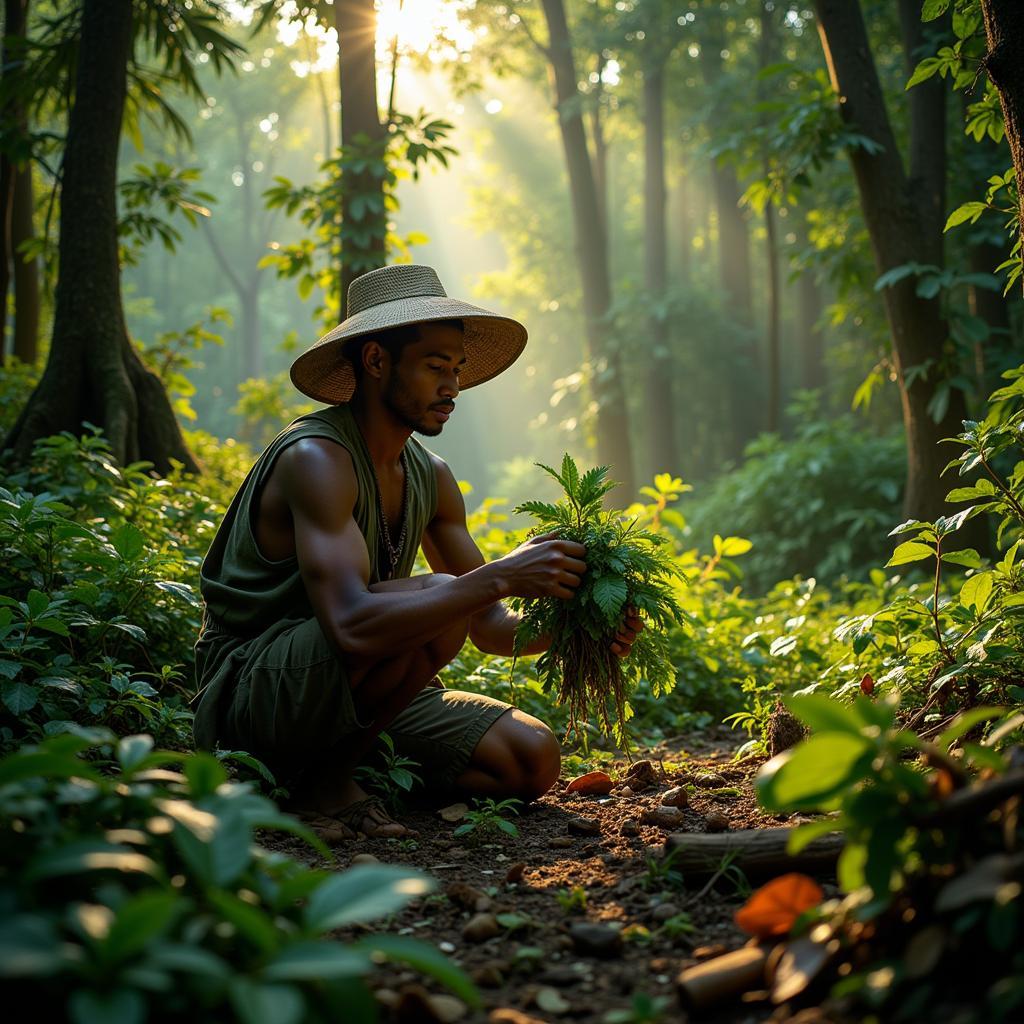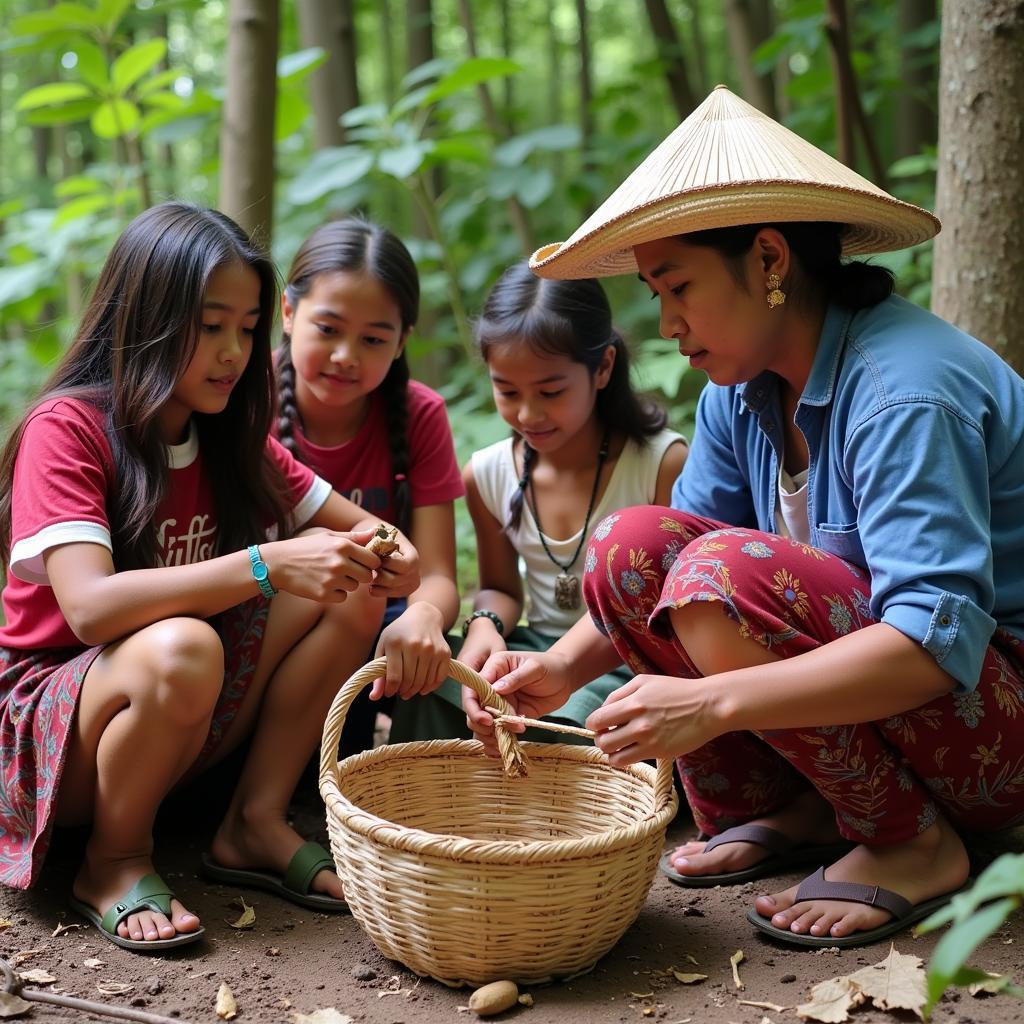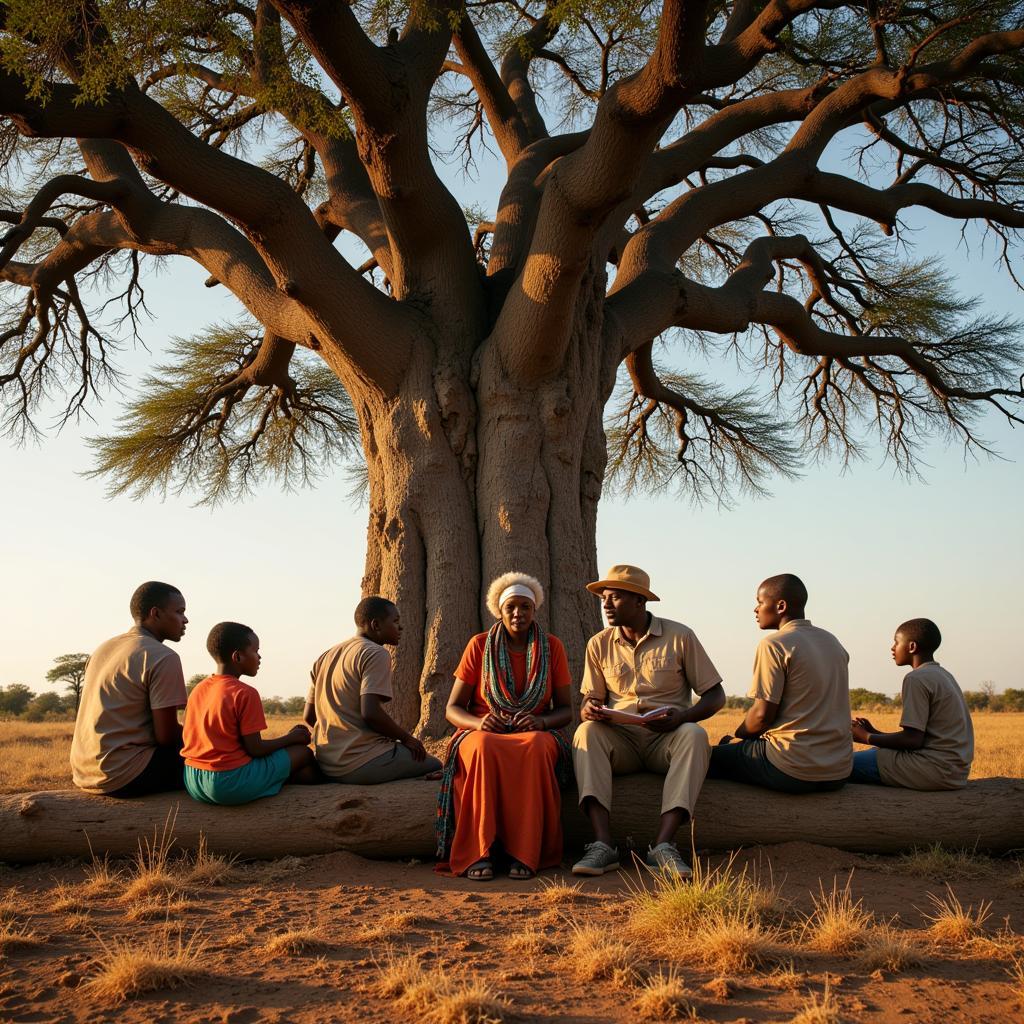Exploring African Human Forest Life
African Human Forest Life is a complex and fascinating tapestry woven from the threads of tradition, adaptation, and a deep connection to the natural world. For centuries, diverse communities have thrived within Africa’s lush forests, developing intricate relationships with their environment. This article delves into the various facets of this unique existence, exploring the cultural richness, survival strategies, and the ongoing challenges faced by those who call the forest home.
The lives of forest-dwelling communities in Africa are intimately intertwined with the rhythms of nature. Their knowledge of the forest, passed down through generations, allows them to sustainably utilize its resources for food, medicine, and shelter. This intricate understanding of the ecosystem is not just practical; it forms the very foundation of their cultural and spiritual beliefs. From the hunter-gatherer groups of the Congo Basin to the agriculturalists of the Guinean Forests, African human forest life represents a diverse spectrum of human experience. After this introduction, let’s explore the diversity of African forest life. Check out more about African elephant range.
The Diversity of African Forest Life
African forests are not monolithic; they encompass a variety of ecosystems, each supporting a unique web of life. This diversity is reflected in the human populations that inhabit these regions. Some communities, like the Baka people of Central Africa, are traditionally nomadic hunter-gatherers, relying on their intimate knowledge of the forest to locate food sources and medicinal plants. Others, such as certain groups in the Guinean Forests, practice agriculture, cultivating crops within small clearings while maintaining a deep respect for the surrounding forest. These varied lifestyles demonstrate the adaptability and resilience of human beings in the face of diverse environmental conditions.
Hunter-Gatherer Societies and Their Forest Wisdom
Hunter-gatherer communities represent a unique window into the past, offering insights into how humans have interacted with nature for millennia. Their deep understanding of animal behavior, plant properties, and the subtle changes in the forest environment are crucial for their survival. This knowledge is not simply accumulated through observation; it is embedded within their cultural narratives, rituals, and social structures.
 Baka Hunter Gathering Forest Food
Baka Hunter Gathering Forest Food
For example, the Baka possess a vast pharmacopoeia derived from forest plants, using them to treat a wide range of ailments. Their knowledge of the forest’s intricate web of life is not just a means of survival; it’s a testament to the profound connection between humans and nature.
Agricultural Practices and Forest Conservation
The practice of agriculture in forest environments requires a delicate balance. Sustainable farming techniques are essential to prevent deforestation and maintain the health of the ecosystem. Many forest-dwelling communities have developed sophisticated methods of agroforestry, integrating trees and crops in a way that minimizes environmental impact. This approach not only provides food security but also contributes to the preservation of biodiversity. Learn about African bull elephant facts.
Challenges and Conservation Efforts
Despite their deep connection to the forest, these communities face numerous challenges. Deforestation, driven by logging, mining, and agricultural expansion, poses a significant threat to their way of life and the biodiversity of the forests. Climate change also adds another layer of complexity, altering rainfall patterns and increasing the risk of forest fires. Protecting these vital ecosystems and the cultures they support requires a concerted effort from governments, conservation organizations, and the international community.
“The forests are not just trees and animals,” says Dr. Aminata Sow, a prominent anthropologist specializing in African forest cultures. “They are living libraries of human knowledge and cultural diversity, and their preservation is essential for the future of our planet.”
How can we support forest communities?
Supporting sustainable development initiatives that empower forest communities is crucial. This includes promoting responsible tourism, investing in education and healthcare, and recognizing the land rights of indigenous peoples. These efforts are not just about protecting forests; they are about safeguarding the rich cultural heritage of humanity. Find more compelling images of Africa.
The Future of African Human Forest Life
The future of African human forest life hinges on our ability to strike a balance between conservation and development. By respecting the traditional knowledge and practices of forest-dwelling communities, we can learn valuable lessons about sustainable living and create a future where both humans and nature can thrive.
 African Forest Children Learning Traditional Skills
African Forest Children Learning Traditional Skills
“The future of the forest is intertwined with the future of its people,” states Dr. Kofi Asante, an ethnobotanist with extensive experience working in African forests. “By empowering these communities, we are not just protecting the environment; we are investing in the resilience of our planet.”
African human forest life offers a powerful reminder of our interconnectedness with the natural world. By understanding and respecting the delicate balance that sustains these communities, we can pave the way for a more sustainable and equitable future for all. For more understanding, read about African grey eyes.
Conclusion
African human forest life is a complex tapestry of human adaptation, cultural richness, and environmental stewardship. By protecting these fragile ecosystems and empowering the communities that call them home, we can ensure the survival of this unique way of life and safeguard the invaluable knowledge it holds for the future. This is vital for the preservation of both biodiversity and human cultural heritage.
FAQ
-
What are the main threats to African human forest life?
Deforestation, driven by logging, mining, and agricultural expansion, and climate change. -
How do hunter-gatherer communities utilize the forest?
They rely on their deep knowledge of the forest for food, medicine, and shelter, utilizing resources sustainably. -
What is agroforestry?
A sustainable farming technique integrating trees and crops to minimize environmental impact. -
Why is it important to support forest communities?
To protect their cultural heritage, promote sustainable development, and preserve biodiversity. -
How can we contribute to the future of African human forest life?
By supporting sustainable development initiatives, respecting traditional knowledge, and advocating for conservation.
Situations and Questions
Scenario 1: You are researching the impact of deforestation on a specific forest community.
- What are the primary drivers of deforestation in this area?
- How has deforestation affected the community’s access to resources and traditional way of life?
Scenario 2: You are interested in learning more about the medicinal practices of a forest-dwelling community.
- What plants are used for medicinal purposes, and how are they prepared?
- How is this knowledge passed down through generations?
Scenario 3: You are exploring sustainable tourism opportunities in a forest region.
- How can tourism benefit local communities without harming the environment?
- What are the ethical considerations for engaging with forest communities through tourism?
Further Exploration
- Explore other articles on our website about African wildlife and conservation.
- Learn more about the specific challenges facing different forest communities across Africa.
- Discover the diverse cultural traditions and artistic expressions of forest-dwelling peoples.
Need assistance? Contact us 24/7:
Phone: +255768904061
Email: kaka.mag@gmail.com
Address: Mbarali DC Mawindi, Kangaga, Tanzania.

